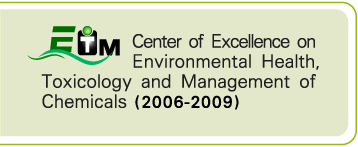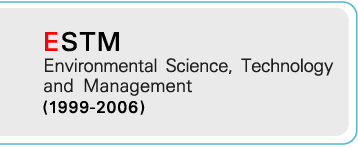The Molecular Effects of Herbicide Paraquat on Pathogenic Bacteria
Dr. Paiboon Vattanaviboon Chulabhorn Graduate Institute and Chulabhorn Research Institute The role of the nfuA gene encoding an iron-sulfur (Fe-S) cluster scaffold protein in the human pathogen, Pseudomonas aeruginosa, was investigated. The expression of nfuA was induced upon exposure to herbicide paraquat and other superoxide generators and thiol-depleting agent and was mediated by IscR, an… (read more)
 Center of Excellence on Environmental Health and Toxicology (EHT)
Center of Excellence on Environmental Health and Toxicology (EHT)










